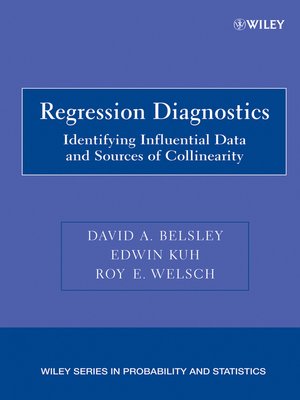Regression Diagnostics
ebook ∣ Identifying Influential Data and Sources of Collinearity · Wiley in Probability and Statistics
By David A. Belsley

Sign up to save your library
With an OverDrive account, you can save your favorite libraries for at-a-glance information about availability. Find out more about OverDrive accounts.
Find this title in Libby, the library reading app by OverDrive.



Search for a digital library with this title
Title found at these libraries:
| Library Name | Distance |
|---|---|
| Loading... |
"The title of the book more or less sums up the contents. It appears to me to represent a real breakthrough in the art of dealing in 'unconventional' data. . . . I found the whole book both readable and enjoyable. It is suitable for data analysts, academic statisticians, and professional software writers."
–Journal of the Royal Statistical Society
"The book assumes a working knowledge of all of the principal results and techniques used in least squares multiple regression, as expressed in vector and matrix notation. Given this background, the book is clear and easy to use. . . . The techniques are illustrated in great detail with practical data sets from econometrics."
–Short Book Reviews, International Statistical Institute
Regression Diagnostics: Identifying Influential Data and Sources of Collinearity provides practicing statisticians and econometricians with new tools for assessing quality and reliability of regression estimates. Diagnostic techniques are developed that aid in the systematic location of data points that are unusual or inordinately influential; measure the presence and intensity of collinear relations among the regression data; and help to identify variables involved in each and pinpoint estimated coefficients potentially most adversely affected. The book emphasizes diagnostics and includes suggestions for remedial action







